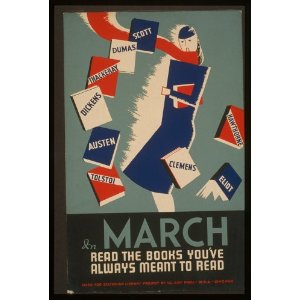 People are always surprised when they discover I don’t own a Kindle. After all, I’m uber book woman, so surely it would be more convenient for me to port them that way. (I’d need a new purse since I’d carry it with me every where!)
People are always surprised when they discover I don’t own a Kindle. After all, I’m uber book woman, so surely it would be more convenient for me to port them that way. (I’d need a new purse since I’d carry it with me every where!)
Case in point – I packed six books for this week’s trip to Nashville. Six. Two I had already started and I finished one on the plane here. Which gave me four and a half to tackle this week. Surely a Kindle would be better than lugging six books.
But see, it’s just that that keeps me from getting an ebook reader. Because after I spend a couple hundred on the reader, I’d have an ongoing expense of another couple hundred a month. And that’s just for what I read and finish. That doesn’t even count all the stuff I want and all the stuff I start and put down. So you can see where this starts to become impractical just from a cost perspective. I could easily lay down $500 a month on books.
This is why I’m a huge library user. And blessed to be in a big city with a big library system. I can randomly pick up a new book to try out with little risk, organize my wishlist by placing requests for holds and discipline myself to get books back in a limited time frame.
So what might get me to try out a Kindle? Give me the Netflix for Kindle option. Let me pay a flat monthly fee to have X number of books at a time and delete them off my Kindle after I finish. (Unless I tell you I want to buy it.) After all, this isn’t a reading format that lends itself to reuse. Most people don’t re-read books, but they do lend them to friends or give them away – neither of which are available on the Kindle. So do I really need the book still after I finish it? Nope.
Here’s the basic idea: tiered levels based on how many books you want to have out at any one time. Let’s say one, three and five. When you finish the book, click done. Amazon deletes that book (hey – a good use for that kill switch) and loads whatever is next in your queue. Start a book but hate it – you can move on to the next one in seconds after clicking done. (Three would work for me – one fiction and two non-fiction. That’s about how I read normally.)
To get publishers on board, there would be a need to create false scarcity with popular titles. So new books might have a limit to how many copies could be put into the system. Want that hot bestseller? You might have to wait a few weeks until a copy is “available”, which might drive you to just buy it instead. (No such buy option directly on Netflix when you have to wait for a movie to be shipped.) False scarcity would keep the copies in the program from cutting into sales too much. Those of us with the patience to wait probably weren’t going to buy it anyway. We’ll just be patient at the library. 🙂
Other options on the biz model would be to only allow hot titles (defined as anything above a certain sales rank and/or maybe released in the last few months) to premium users. So you could pay a higher price, but have better access to titles. Or maybe only certain titles are offered in the program at any one time, ala Netflix instant streaming. There’s a certain level of randomness to what movies are available instantly and how long that lasts. Could work for book titles too. Let’s say only Random House signs on and each book is only available for a month or so.
Lots of options and things to consider here. But this is one model that would make me buy a Kindle today. And pay for overnight shipping on it. Can you improve on it?
(Before you mention it: Yes, an iPad is in our future. And yea for free books on there. But buying them, still not going to happen. Thus the need for a new business model.)
 Tarot Card Deck Mockup
Tarot Card Deck Mockup  Pizza Truck
Pizza Truck  Bus Bench Ad
Bus Bench Ad